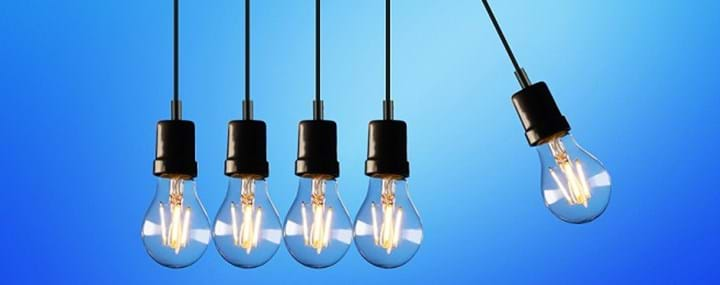
Immersion heaters and storage heaters
Immersion heaters
How does an immersion heater work?
You are likely to have an immersion heater if your home is heated by electricity rather than by a gas combi boiler. It is important to only use your immersion heater when you really need hot water, as it can be expensive to keep your water hot all day.
Your immersion heater works by heating up water in a hot water cylinder which can range in size from 120 litres to 500 litres. A standard water cylinder would probably hold 200 litres of water. There are two immersion elements within the cylinder, one at the bottom that heats a lot of water, and one closer to the top that heats a small proportion of the water. The top element is the boost function and the bottom element is your every day hot water use.
Download the immersion heater guide
Controlling your immersion heater
To control your immersion you will have an immersion control panel, probably in your kitchen. They come in a range of designs, but as a bare minimum they will all have an on/off switch and a boost switch.
The on/off button gives you hot water for as long as it is kept I the ‘on’ position.
A light should be illuminated to remind you the immersion heater is on.
The booster switch should be turned counter clockwise all the way round to give one hour of additional hot water.
Storage Heaters
Download the storage heater guide
How Storage Heaters Work
Storage heaters are a form of electric heating used in homes without gas. They are a tried and tested technology that started being used in the late 1940’s. They use most of their power at night, which was seen as advantageous for the electricity companies who wanted to shift energy use from the day to the night, when less energy was being consumed. They generate heat at night and then release that heat slowly throughout the day.
How to use the controls
There are two dials on a storage heater, an input and an output, which can sometimes be called a boost. Both can have numbers of between 1 and 9 depending on the model.
The input dial controls how much heat is stored overnight. The higher the number you set it to, the more heat is stored. The output controls how quickly the heat is released. The higher the number you set it to, the quicker it releases the heat.
You should alter the input depending on how much warmth you think you will need. You are likely to turn it up on cold winter days and turn it down when it is less cold. Sometimes it requires a bit of forward planning. If you know tomorrow is likely to be cold, then you should turn the input up before you go to bed.
The output is the dial you are likely to alter the most. You might turn it up first thing in the morning when you wake up to give you some quick heat. You will turn it down during the day whilst you are out or at work. You may then turn it up in the evening for extra heat. You should turn it down before you go to bed so that your heater doesn’t release heat over night, and has a chance to store heat for the next day.
Economy 7
Where you have storage heaters it is possible that you have a 2 rate meter (see Energy Series 05 Reading your Energy Meters) known as Economy 7. This is a tariff designed to provide cheaper energy by night and standard rate electric by day. It is often used in homes with storage heaters, as they use a lot of energy overnight, rather than during the day.
If you have storage heaters and you think you would benefit from having a 2 rate meter, you should contact your energy company and ask about Economy 7 and Economy 10 (similar to Economy 7). You will need to have a new electricity meter installed to benefit from these tariffs.
Energy saving tips for storage heaters
- At night make sure that the output control is set to 1.
- Each room is controlled by an individual heater. Switch off heaters you don’t need in some rooms. If the temperature outside drops, you should turn on storage heaters to a low level in unused rooms, to prevent condensation build up.
- If you decide to switch off your storage heaters, then turn them off at the wall to ensure you are not using any energy.
- Do not cover storage heaters, or put clothes on them to dry. Try and keep furniture away from them, so as much heat reaches your room as possible.
- Try not to use secondary forms of heating during the day. Day rates can be three times more expensive than night rates on Economy 7.

If you need any help
Please call our Contact Centre on 0161 393 7117.